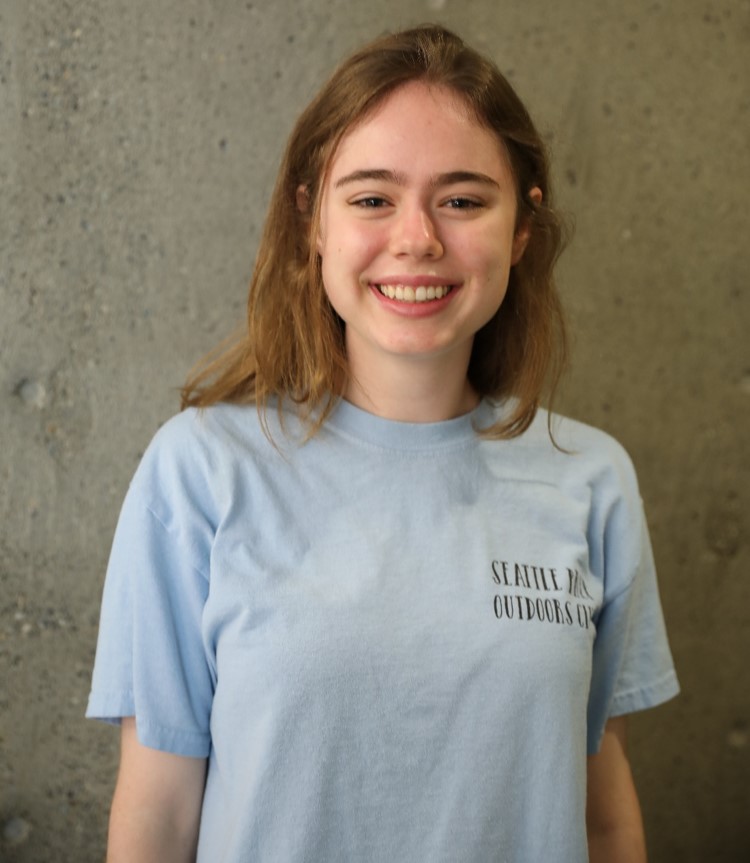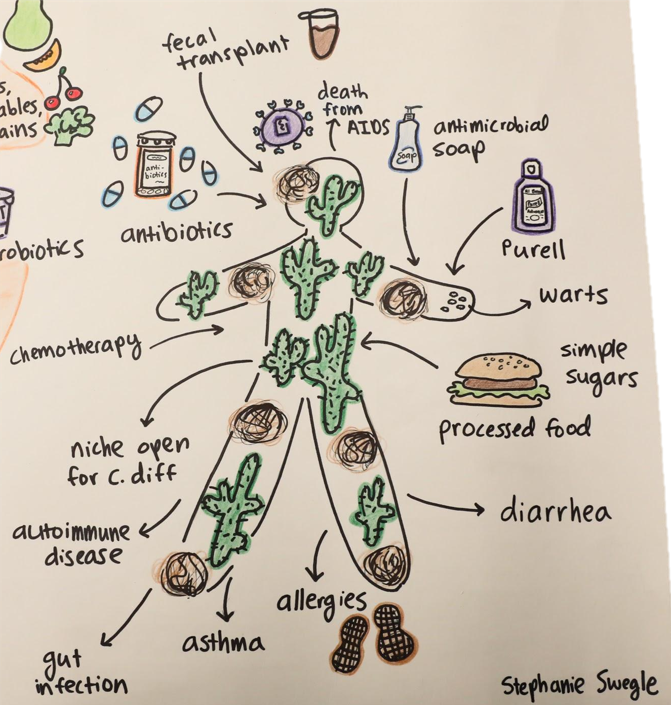Stephanie Swegle
Seattle Prep HS, WA
Senior (2019-2020)
 Career Goals:
Career Goals:
I want to be a bioengineer. I am super interested in finding creative and innovative ways to solve environmental and health problems. I am also interested in immunotherapy, epigenetics and environmental policy.
What did you learn from this course?
I learned about bio art and how artists can communicate complicated ideas, like the ethics of genome sequencing and the inhumane atmosphere of a sweatshop, through the combination of biology and art. I loved hearing from all of the scientists who talked to us. Hearing about the research they get to do at ISB and other labs made me even more interested in pursuing a career in research. I learned about how bioinformatics and computational biology can be used to analyze patient data to discover better and more personalized treatments for people like breast cancer patients. I thought it was interesting how interactive a field bioinformatics is and how connected computational biologists can be with researchers. One of the most interesting talks for me was from a colon cancer survivor. Her story of how P4 medicine potentially saved her life was very eye-opening and inspiring. I also learned how helpful it would be to incorporate point of care ultrasound into the health care system.
What advice do you have for future Ambassadors?
I think it is really good to take notes on things that stick out to you during the talks. I wrote down the things the speakers said that made me excited and interested so I could do more research on those topics later, or incorporate them into my project.
– Showcase Project –
"The Microbiome and The Hygiene Hypothesis"
Who/What inspired this project?
The talk from Sean Gibbons was very inspiring for me. It was very interesting to hear him talk about how every time you interact with another person, you will share some of your microbiomes with each one another. I also found it interesting when he talked about the hygiene hypothesis and how not interacting with the environment enough, using too much Purell or being too concerned about being clean, can negatively impact your microbiome diversity. I was fascinated when he talked about how low microbiome diversity can lead to asthma, warts, autoimmune diseases, and so many more health problems, and that a fecal transplant can replenish the microbiome diversity.



How does your project communicate the relationship between the environment and health?
My project shows how important it is to have a healthy relationship with the environment. Microbiome diversity goes up when you spend more time in nature, and spend less time worrying about being clean. Exposing yourself to new organisms, places, and people in the environment adds diversity to your microbiome, along with eating fruits, vegetables, and whole grains. On the other hand, being too sheltered, eating too many processed foods, taking too many antibiotics and using too much Purell/ antimicrobial soap can decrease microbiome diversity and lead to a whole host of problems.
Who is your target audience?
My target audience is mostly high school and college students because I can picture this poster being hung up in a classroom, but anyone could benefit from this knowledge.
As an Ambassador, how do you plan to share your message with your target audience?
I plan to share the knowledge I have gained at ISB by talking to the science department at my school and seeing if we can incorporate more about the microbiome and P4 medicine into the curriculum.
